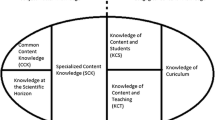Abstract
This paper starts from the assumption that learning is promoted through confronting students with the inconsistencies entailed by their own beliefs. The issue is explored in the domain of electricity in the context of simple DC circuits. Previous work is used as the basis for the construction of a programme of work that is undertaken by a group of students. This programme entailed the development of a computer-based modelling environment called ELAB. The underlying design principle is that students should be able to model electrical circuits at a level which permits them to express some of their explicit (possibly mistaken) beliefs about relevant concepts. Other, implicit, beliefs should also be detectable through use of the system. The results derived from observation suggest that computer-based modelling facilities can provide advantages over approaches exploiting other media. In particular, such systems can be used to promote the kinds of intellectual conflict that are believed to be beneficial.
Similar content being viewed by others
References
Archenhold, W.F. (1975). A study of the understanding by sixth form students of the concept of potential in physics. Unpublished M.Sc. thesis, University of Leeds.
Arons, A. B. (1982). Phenomenology and logical reasoning in introductory physics courses. American Journal of Physics, 50(1), 13–20.
Beeson, G.W. (1977). Hierarchical learning in electrical science. Journal of Research in Science Teaching, 14, 117–128.
Brna, P. (1987a). Confronting dynamics misconceptions. Instructional Science, 16(4), 351–379.
Brna, P. (1987b). Confronting science misconceptions with the help of a computer. Unpublished Ph.D. thesis, Department of Artificial Intelligence, University of Edinburgh.
Brna, P. (1987c). A methodology for confronting science misconceptions. Research Paper 353, Department of Artificial Intelligence, Edinburgh.
Caillot, M. (1984). L'Intelligence Artificielle au service de la formation. Paper presented at FORUM EAO 84.
Cohen, R., Eylon, B. and Ganiel, U. (1983). Potential difference and current in simple electrical circuits: a study of students' concepts. American Journal of Physics, 51(5), 407–412.
diSessa, A. (1983). Phenomenology and the evolution of intuition. In Gentner, D. and Stevens, A., (eds.), Mental Models, Lawrence Erlbaum Press.
Driver, R. (1981). Pupils' alternative frameworks in science. European Journal of Science Education, 3(1), 93–101.
Driver, R. (1983). The Pupil as Scientist? Open University Press.
Fredette, N. and Lockhead, J. (1980). Student conceptions of simple circuits. Physics Teacher, 18, 194–198.
Gentner, D. and Gentner, D.R. (1983). Flowing waters or teeming crowds, mental models of electricity. In Gentner, D. and Stevens, A., (eds.), Mental Models, Lawrence Erlbaum Press.
Johnstone, A.H. and Mughol, A.R. (1978). The concept of electrical resistance. Physics Education, 13 (1), 46–49.
Nagel, E. (1961). The Structure of Science. Routledge and Kegan Paul.
Osborne, R.J. and Freyberg, P. (1985). Learning in Science, The Implications of Children's Science. Heinemann.
Osborne, R.J. and Gilbert, J.K. (1980). A method for investigating concept understanding in science. European Journal of Science Education, 2(3), 311–321.
Osborne, R.J. (1981). Children's ideas about electric current. New Zealand Science Teacher, 29, 12–19.
Osborne, R.J., Bell, B.F. and Gilbert, J.K. (1983). Science teaching and children's views of the world. European Journal of Science Education, 5(1), 1–14.
Shipstone, D.M. (1984). A study of children's understanding of electricity in simple DC circuits. European Journal of Science Education, 6(2), 185–198.
Sussman, G.J. and Steele, G.L. (1980). Constraints—a language for expressing almost-hierarchical descriptions. Artificial Intelligence, 14, 1–39.
Tiberghien, A. and Delacote, G. (1976). Manipulations et representations de circuits electrique simples chez les enfants de 7 a 12 ans. Révue Français de Pédagogie, 34.
White, B. and Fredericksen, J.R. (1986). Intelligent tutoring systems based upon qualitative model evolutions. In White, Proceedings of AAAI-86, 313–319, American Association for Artificial Intelligence.
White, B. Y. and Frederiksen, J. R. (1988). Causal Model Progressions as a Foundation for Intelligent Learning Environments. Report No. 6686, BBN Laboratories. To appear in the Journal of Artificial Intelligence.
Author information
Authors and Affiliations
Rights and permissions
About this article
Cite this article
Brna, P. Confronting misconceptions in the domain of simple electrical circuits. Instr Sci 17, 29–55 (1988). https://doi.org/10.1007/BF00121233
Issue Date:
DOI: https://doi.org/10.1007/BF00121233




